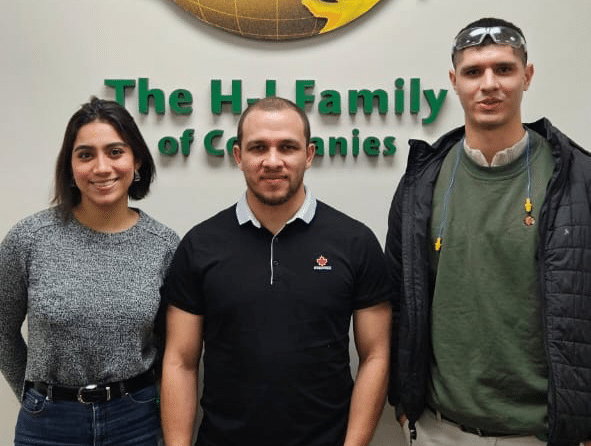International Travel
If you are traveling to the U.S. for the first time, or traveling internationally during your program, there are a few important things you need to know when heading to the airport. International and even domestic flights have heightened security with many new regulations for what you may bring with you on your flight.
Many of you will be flying internationally and will be checking baggage. Be sure to check with your airline to see how many pieces of luggage you may bring with you, as well as the size and weight. If you exceed the weight limit, there may be a checked-bag fee, which can be expensive.
What to Bring With You
Passport, DS-2019 and J-1 Visa: The three most important things to bring with you to the airport are your passport, DS-2019 and J-1 Visa. You will not be able to get into the United States without these. You should carry these documents with you—not in your checked luggage—and you should also have a copy of each item with you.
You will receive a few forms during your flight to complete by the time you arrive, including your I-94 (Arrival-Departure Record) and your Form CF-6059 (Customs Declaration Form). Once off the plane, you will immediately go to Customs and Border Protection (CBP) to gain admission to the U.S. You will tell the CBP officer you are a J-1 Exchange Visitor when you present the following documents: valid passport including your J-1 visa, DS-2019 form, I-94 and CF-6059. You may also be fingerprinted and photographed at this time.
When CBP’s inspection is complete the officer will stamp you DS-2019 form as well as stamp the bottom portion of your I-94 and staple it to your passport. For up-to-date information on clearing Customs, please visit http://www.cbp.gov/xp/cgov/border_security/
Traveling During Your Internship
If you are planning to go on vacation or home during your program, there are a few important things you should know in advance.
There are many items you can bring with you on your flight as long as they are checked in your baggage. You may bring bigger sized toiletries of bottles and liquids as well as long as they are in your checked baggage. If you are bringing a carryon bag, you are only allowed to bring 3.4 ounces (100ml) or less of liquids. All liquid items must be put in zip-lock bags. Many sharp items, such as knives or razors, will need to be checked in your luggage, but small scissors are usually acceptable in a carryon. When in doubt about an object, it is always best to check the item. For a complete list of things you may bring in a carry-on or things you will need to check please visit here.
What to Do When You Get to the Airport
When you first arrive at the airport you should check into your airline and receive your flight ticket. At the same time you should also check your baggage, if necessary. You will then move on to security. As you come up to security you will need to place all of the items with you on the conveyer belt. Small items should be placed in bins. If you are bringing a laptop with you, you will need to take it out and place it into a bin of its own. Each traveler must remove their quart-sized plastic, zip-top bag of liquids from their carry-on and place it in a bin or on the conveyor belt for X-ray screening. X-raying separately will allow security officers to more easily examine the declared items.
You will also need to remove your shoes, belts, watches, coats or sweaters and place them into a bin as well. As your items are being checked you will go through a metal detector or a body scanner to check what you may have on your body. This requires you to step into an open machine and raise your arms while the machine scans your body. The process is very quick.
If you have a layover to change flights once you have entered the U.S. from abroad, you should remember that you typically need to receive and re-check your baggage before your next flight.
Traveling During Your Program
During your program you may decide to travel on vacation within the U.S. or abroad for a short stay. You should remember that in order to travel outside of the U.S. during your program you must submit your DS-2019 Form to InterExchange for a travel validation signature before you leave the U.S. Failure to obtain a travel validation signature may result in you being detained by immigration officials for questioning or even denial of entry into the U.S. when you return. The signature is valid for 6 months, so if you travel multiple times within a 6-month period, you do not have to have your form signed each time.
You can mail your DS-2019 Form to us for a signature. Please provide your travel details, and include a self-addressed envelope with the address where you would like your form returned. If you will need your form returned via express mail, you must include a check or money order for $20, made out to InterExchange, to cover the express shipping fees. We recommend you send us your form at least 2-3 weeks before your intended travel date to ensure there are no delays.
If you are in NYC, you may come to our office for a signature. You must call in advance to schedule an appointment to have your form signed so that you can ensure an authorized member of our staff will be available to assist you.
You may travel within the U.S. during your program without travel authorization signature, as well as during the 30-day grace period after your program ends. Also keep in mind that you may only travel within the U.S. after your program ends—if you leave the U.S. during your grace period you will not be allowed to re-enter on your J-1 Visa, as it will have already expired in most cases.
For up-to-date information on what you can bring with you on your flight, please visit http://www.tsa.gov/travelers/index.shtm. You should also read the Participant Handbook that was sent to you in your acceptance packet for detailed information on traveling.




